The formation of Sossusvlei's dunes
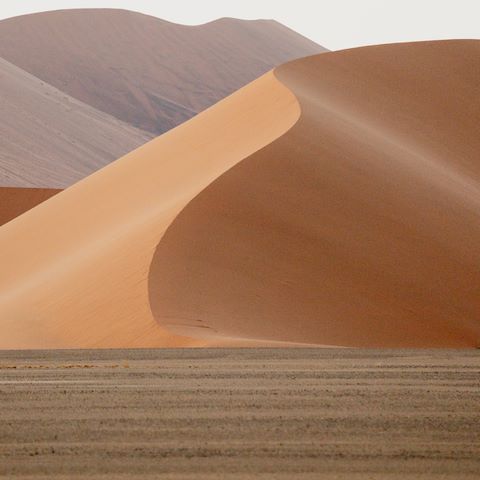
Sossusvlei, a name that evokes visions of towering red dunes and endless desert horizons, is one of the most iconic landscapes in Namibia. Visitors familiar with the region may already know the beauty of these wind-sculpted formations, but how many truly understand the ancient processes that shaped them? These dunes, some of the oldest in the world, are the result of millions of years of complex natural forces. To grasp the depth of their formation, we journey back in time and explore the intricacies of wind, sand, and geological history that together crafted this magnificent desert.
The age of the Namib Desert
In the Nama language, “sossus” translates as a dead end or place of no return, while
in Afrikaans the word “vlei” means shallow lake or marsh.
The Namib Desert, where Sossusvlei is located, is believed to be one of the oldest deserts on Earth, dating back at least 55 million years. Its arid conditions began with the opening of the Atlantic Ocean and the subsequent development of the cold Benguela Current off Namibia’s coast. This cold current limited moisture from reaching inland areas, effectively creating a hyper-arid environment that has persisted for tens of millions of years.
Over this vast timescale, the forces of wind and erosion worked to produce sand, sourced primarily from the eroded sediment of the Orange River, which flows from the Drakensberg mountains to the Atlantic Ocean. Once the river's sediment reached the ocean, coastal currents transported it northward, where prevailing winds slowly deposited the sand inland. As these particles accumulated over millennia, the first sand dunes began to rise, forming the foundation of what we see today.
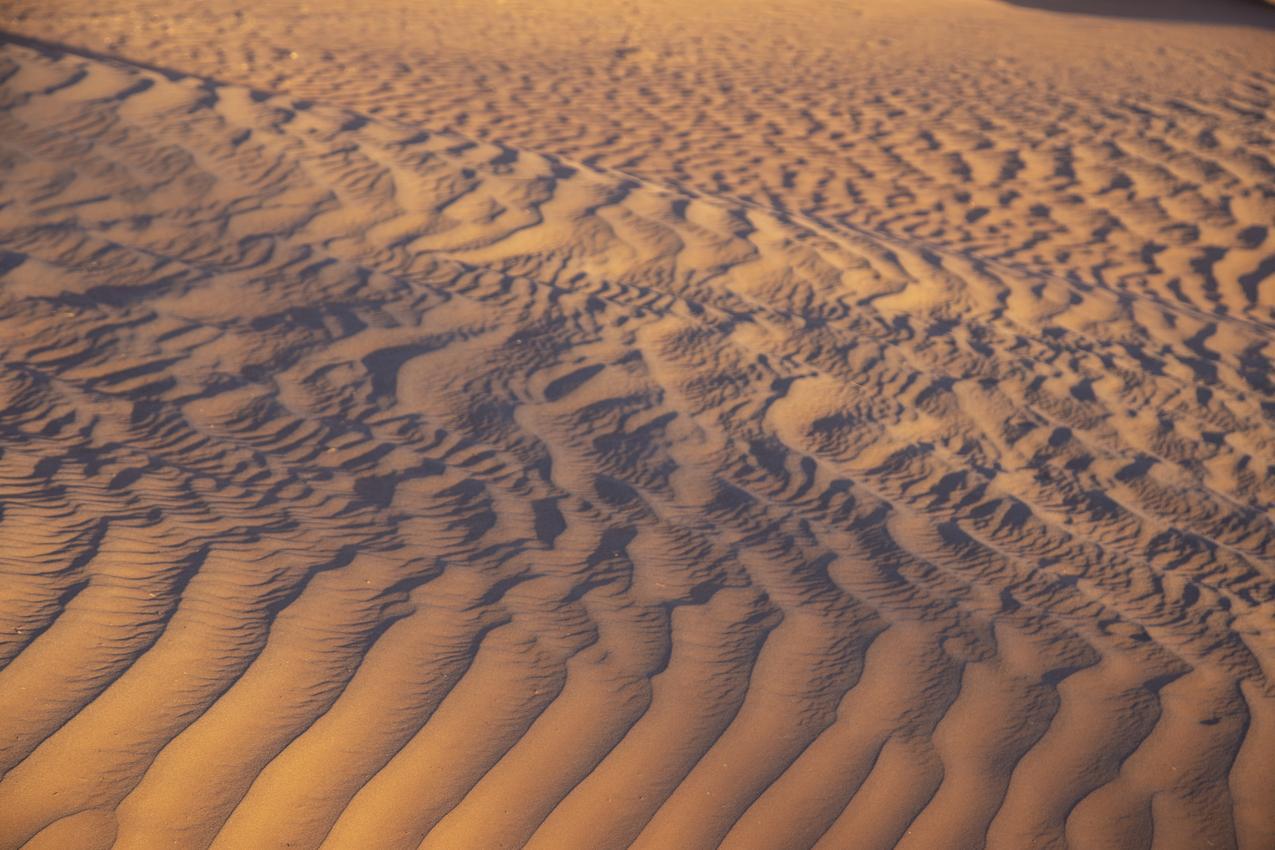
The role of wind in shaping the dunes
Wind is the primary sculptor of the Sossusvlei dunes, and its role cannot be overstated. The area is characterised by two dominant wind systems: the westerly coastal winds and the easterly winds from the interior. These winds create dynamic interactions that shape and shift the dunes into their iconic crescent or star shapes, depending on local conditions.
The westerly winds carry moist air from the Atlantic Ocean, although by the time they reach Sossusvlei, any potential rainfall has usually been dissipated. These winds primarily move the dunes in a south-easterly direction. On the other hand, the dry easterly winds (known locally as "berg winds") are stronger and play a significant role in redistributing the sand back toward the coast.
This constant interplay between the two wind systems creates a unique dune pattern, known as "star dunes", which can be seen in many parts of Sossusvlei. These dunes often have multiple arms extending out from a central peak, a result of the wind shifting direction over time. The star dunes are particularly stable and can reach towering heights, with some exceeding 300 metres. They are among the tallest dunes in the world.
Dune types
As well as the star dunes on its eastern margin, The Namib Sand Sea is dominated by large longitudinal dunes, and a belt of transverse and barchan dunes along the coast.
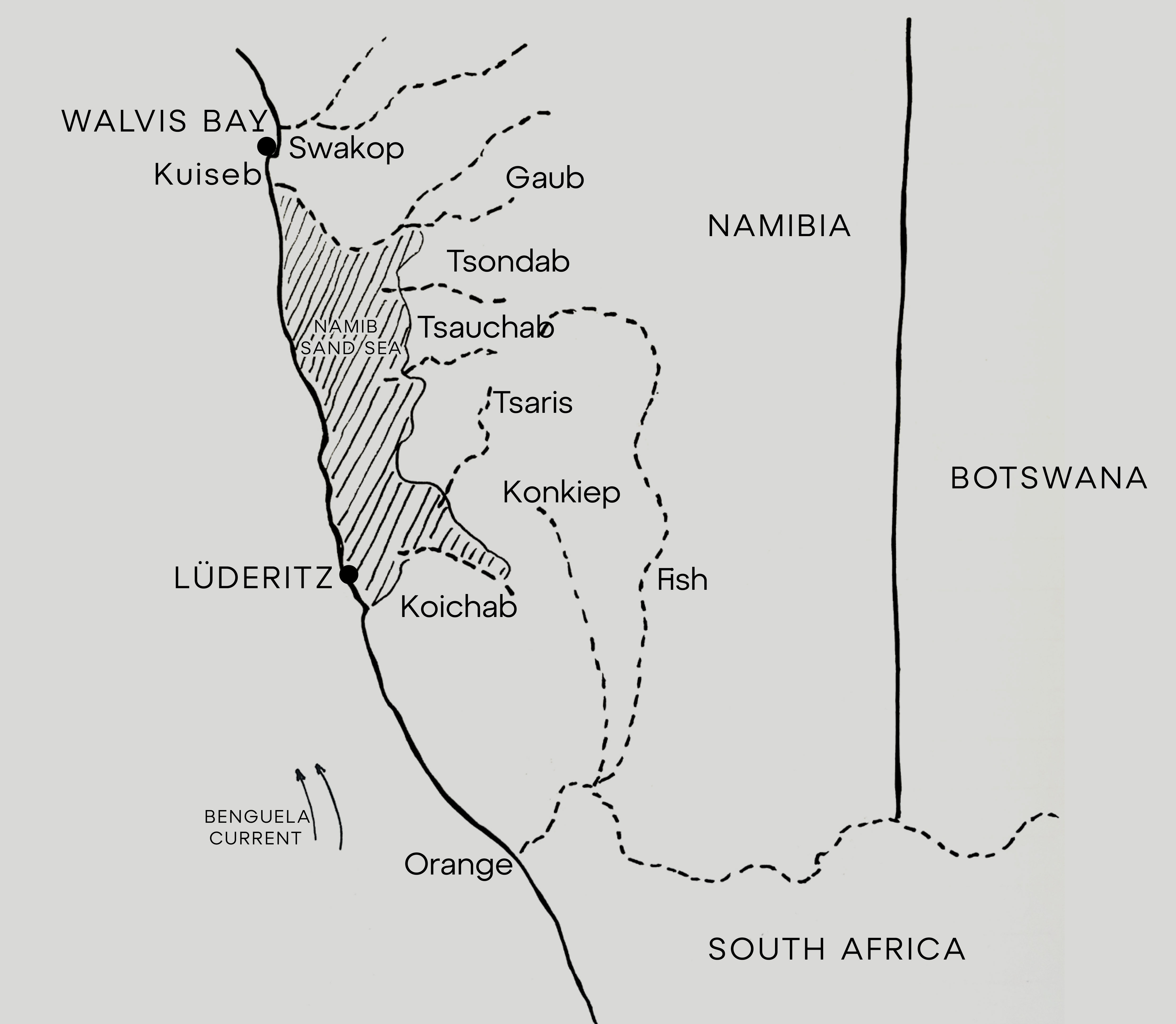
Longitudinal Dune
This dune type occurs in the central part of the sand sea and cover the largest part of the dune Namib – typically up to 100 km long and 120 metres high. Found up to 90km inland and are formed by prevailing winds from a southerly direction.
Star Dune
This dune type occurs on the eastern edge of the sand sea and is formed by winds from multiple directions. As a result, the dunes hardly move. They also average 220 metres in height.
Barchan Dune
These crescent-shaped dunes are highly mobile and found at the edges of a sand sea as they can form from a limited sand supply.
Transverse Dune
Transverse dunes can reach up to 75 metres in height and occur in the coastal areas up to 30 km inland.
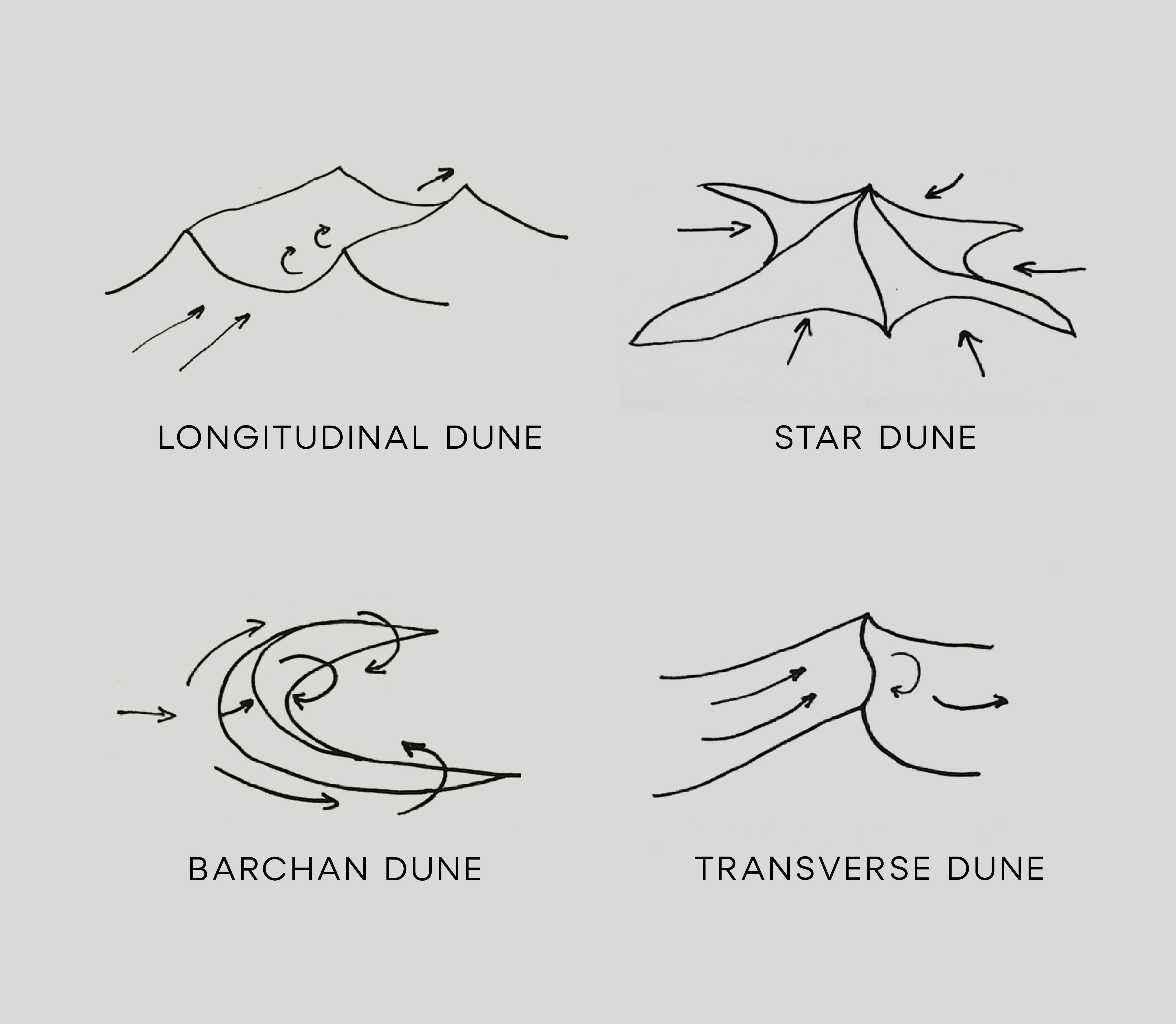
The living desert
“The variable wind regimes that have sculptured the star dunes in the Sossusvlei area are responsible for more than just the unique shape of these dunes”, notes Dr Conrad Brain, Wilderness Environmental Officer.
“With dune crests consisting of multiple continually changing slipface aspects, the upper levels of these dunes are very unstable and are a rapidly changing environment. This unstable situation greatly influences the availability of wind-blown detritus that is the life blood of almost all desert organisms”.
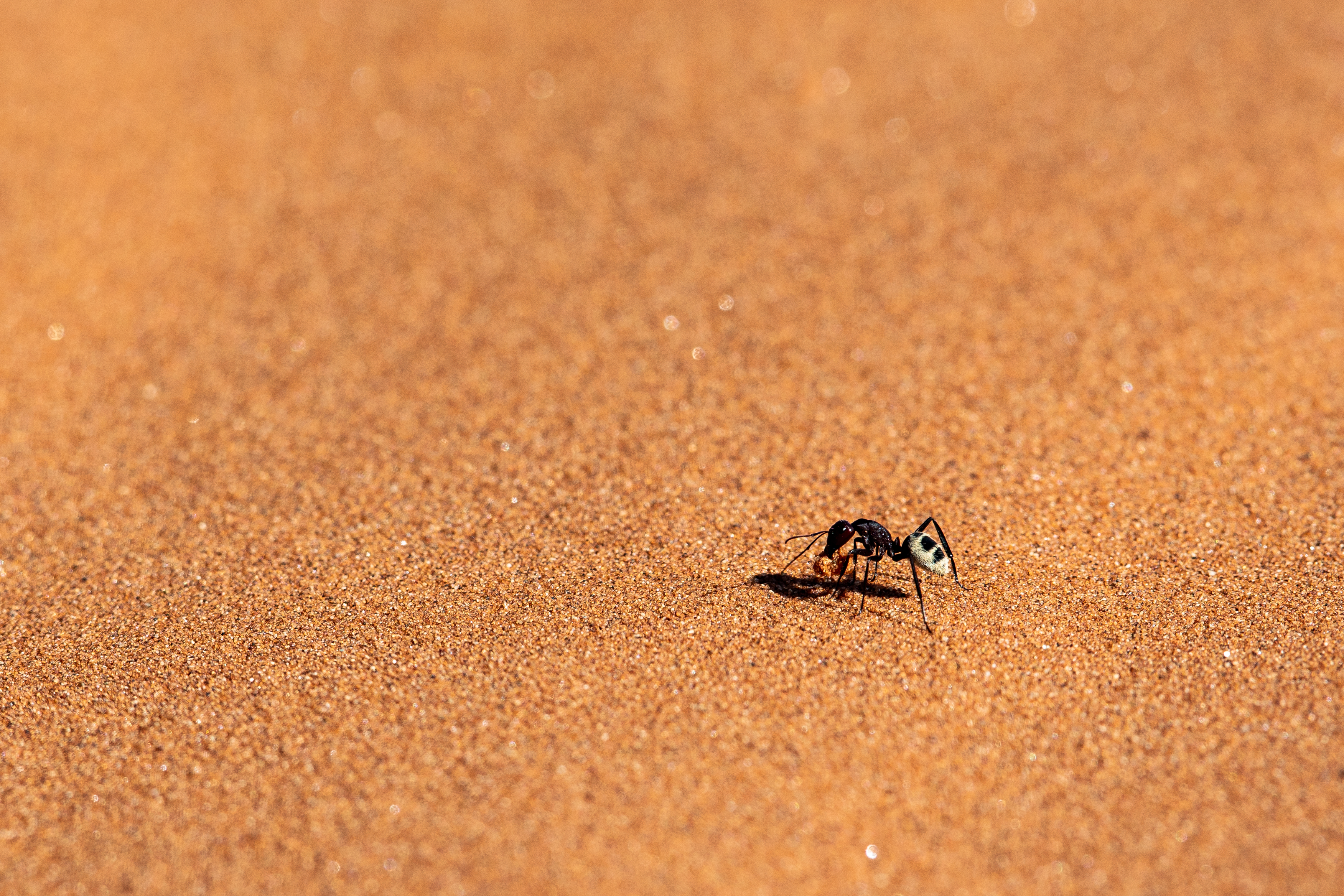
Despite the apparent barrenness of the Sossusvlei dunes, life persists in this harsh environment. Certain plants and animals have adapted to the arid conditions, finding ways to survive in an ever-shifting sea of sand.
Camelthorn trees send deep tap roots into ancient underground water reserves, anchoring the trees against persistent winds.
Male Namaqua sandgrouse have breast feathers specially adapted to hold water, which they can then carry back to their chicks.
Certain Namib Desert beetles collect moisture from the fog that drifts inland from the coast; Head-standing beetles “fog bask” to collect airborne moisture by performing co-ordinated “handstands” on dune crests, using their own body surface as a fog water collector, while another Namib beetle, Stenocara gracilipes, has a body surface covered in minute bumps. This fog-harvesting beetle has served as inspiration in creating materials and harvesters to capture drinking water for people living in arid places.
“The changing aspects also greatly influence the possibility of fog harvesting, which many dune dwellers depend on. Consequently, the upper reaches of these massive dunes are relatively devoid of desert fauna and flora. However, the lower portions are the opposite as here is a very stable and undynamic wind regime and desert organisms thrive in these regions of the dunes. This layered delineation of life is strikingly obvious when you ascend these giant star dunes, and is a continual reminder of the complex interaction of both biotic and abiotic factors at play, creating one of the true wonders of the Namib, and indeed the planet”, adds Conrad.
Sossusvlei's red sands
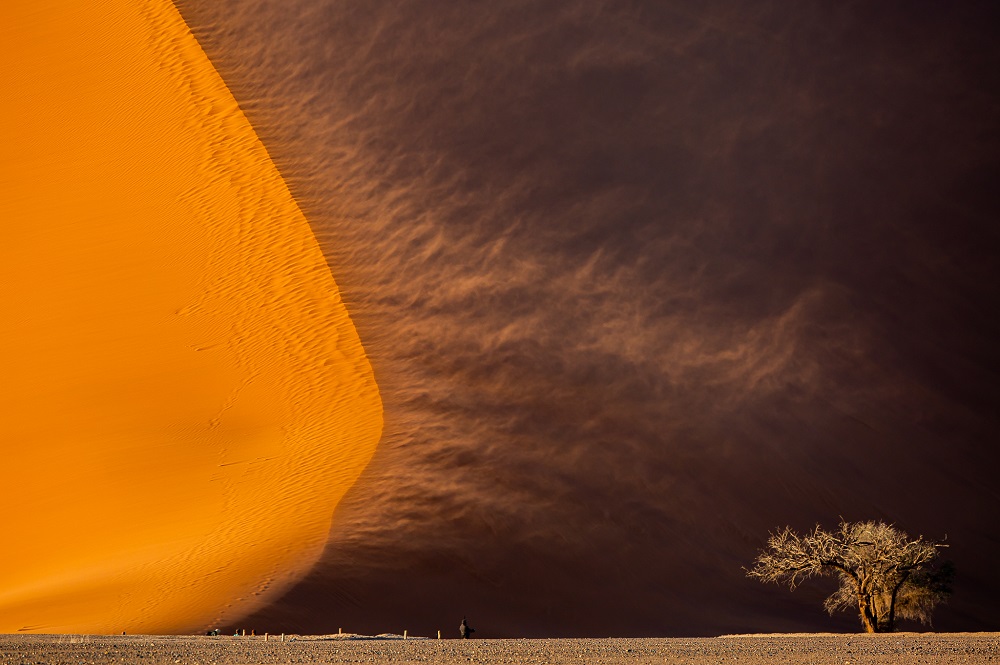
The vivid red colour of the Sossusvlei dunes is one of their most striking features, and is actually also a marker of their age. The iron content in the sand oxidises over time, much like rust forming on metal, giving the dunes their reddish hue. The older the dune, the more intense its red colour, with the oldest dunes taking on a deep burnt orange.
Interestingly, the dunes of Sossusvlei are not static – they are constantly evolving and shifting. However, some have remained largely unchanged for thousands of years due to their immense size and the stabilising influence of vegetation in certain areas. The contrasting shades of red and orange across the dunes hint at the timeline of their formation, a glimpse into the region's geological history.
Dune 45: An icon among giants
Dune 45: An icon among giants
One of the most famous dunes in Sossusvlei is Dune 45, named for its location 45 kilometres from Sesriem, the nearest settlement. While all the dunes in the region are awe-inspiring, Dune 45 has become one of the most photographed dunes in the world.
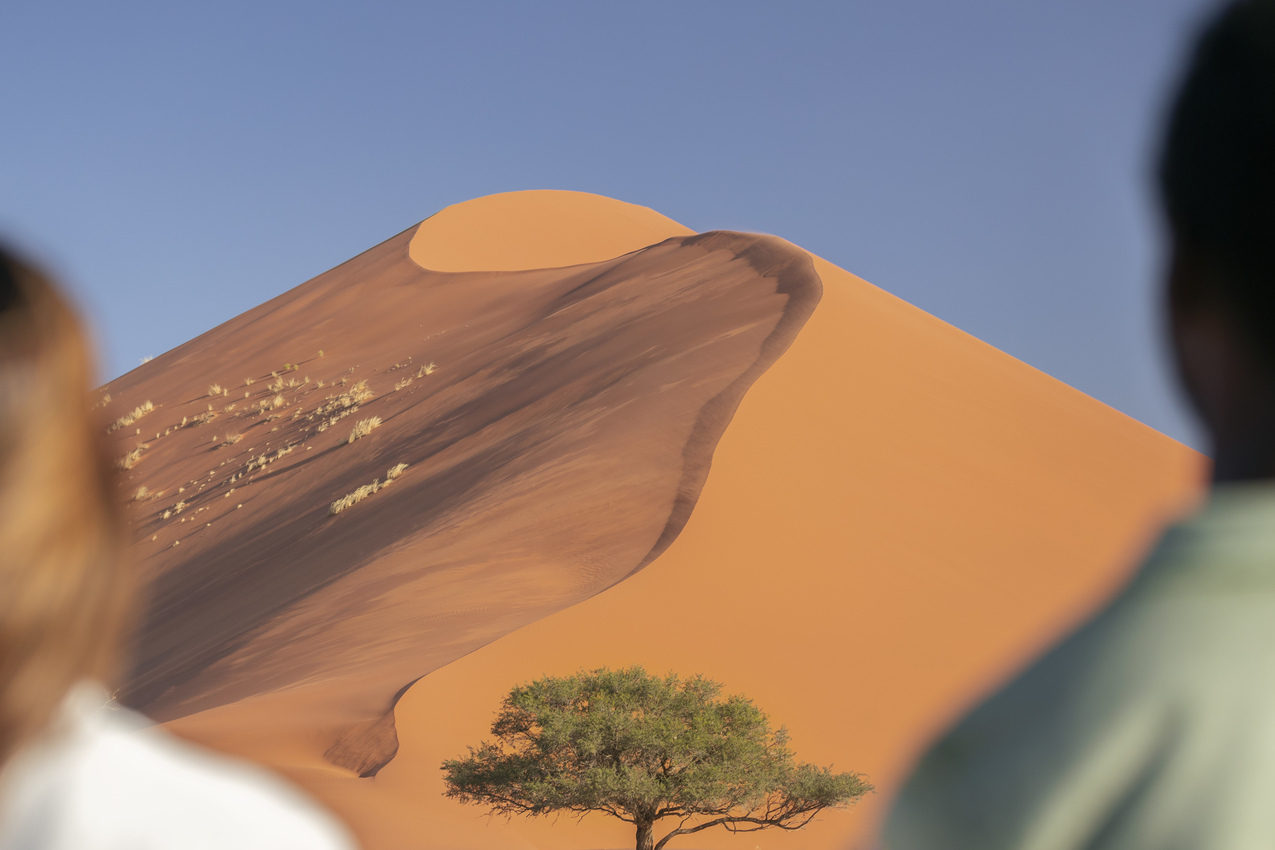
What makes Dune 45 particularly interesting is its accessibility and perfect symmetry. Standing at about 170 metres high, it is not the tallest dune in the region, but its graceful slope and the surrounding landscape make it a popular spot for visitors. Its location, close to the road leading into Sossusvlei, makes it easily reachable, and climbing it offers stunning panoramic views of the desert.
Big Daddy Dune: The King of Sossusvlei
While Dune 45 often steals the spotlight, the true monarch of Sossusvlei is Big Daddy, standing at around 325 metres tall. Towering over the ancient clay pan of Deadvlei, Big Daddy is not only the highest dune in the Sossusvlei area but one of the tallest in the world.
Climbing Big Daddy is no small feat – it’s a strenuous trek that can take up to an hour or more, but with access to an exclusive-use gate into Sossusvlei, guests to Wilderness Kulala Desert Lodge and Little Kulala get to the dunes before the midday heat descends. For those who make it to the summit, the reward is sweeping views of the surrounding dunes and the otherworldly landscape of Deadvlei below, where the petrified trees have stood lifeless for over 900 years.

Like Dune 45, the reddish hue of Big Daddy’s sands indicates its ancient origins. This dune is particularly well-known for its dramatic slopes and the thrill of descending its steep face, a heart-pounding experience that draws adventurers and photographers alike.
The dunes of Sossusvlei are much more than piles of sand – they are living monuments to the Earth's geological and climatic history. Their formation is a story that spans millions of years, shaped by wind, water, and time. For those familiar with the beauty of Sossusvlei, understanding the intricate processes that created these dunes adds an even deeper appreciation for this ancient landscape.
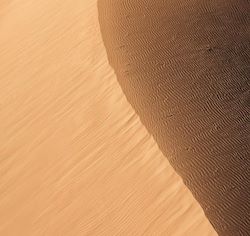

Let’s plan your next journey
Ready?
When we say we’re there every step of the way, we mean it, literally. From planning the perfect circuit, to private inter-camp transfers on Wilderness Air, and easing you through Customs. We’re with you on the ground, at your side, 24-7, from start to finish. Ready to take the road less travelled? Contact our Travel Designers to plan an unforgettable journey.